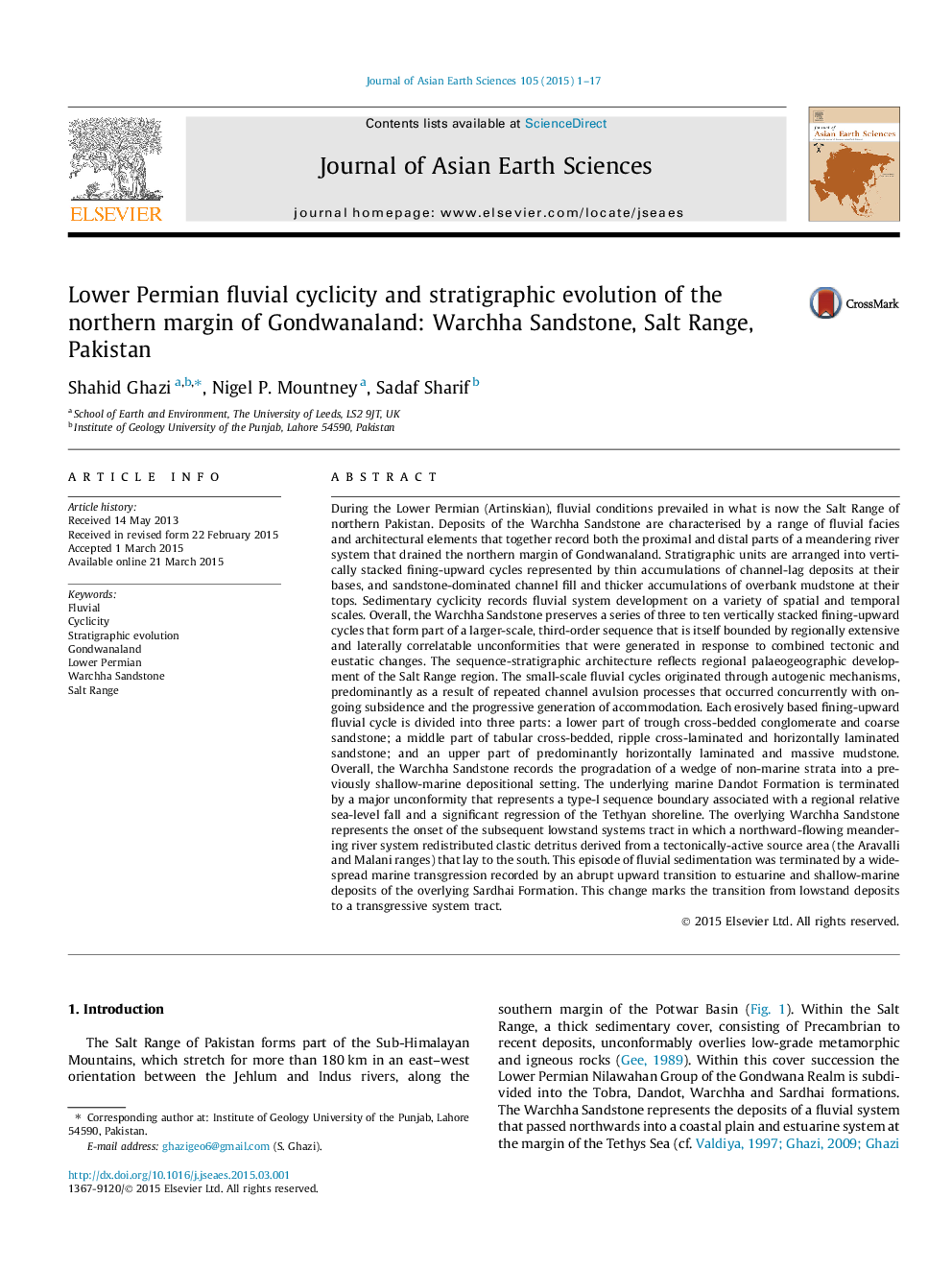| کد مقاله | کد نشریه | سال انتشار | مقاله انگلیسی | نسخه تمام متن |
|---|---|---|---|---|
| 4730482 | 1640364 | 2015 | 17 صفحه PDF | دانلود رایگان |

• A sequence developed within the preserved deposits of a meandering system during Lower Permian.
• The origin of a series of prominent metre-scale depositional cycles.
• A northward-flowing river system is interpreted to have drained part of the northern Gondwana landmass before entering into the Tethys Ocean.
• Detailed sedimentological study has international significance in palaeogeography.
During the Lower Permian (Artinskian), fluvial conditions prevailed in what is now the Salt Range of northern Pakistan. Deposits of the Warchha Sandstone are characterised by a range of fluvial facies and architectural elements that together record both the proximal and distal parts of a meandering river system that drained the northern margin of Gondwanaland. Stratigraphic units are arranged into vertically stacked fining-upward cycles represented by thin accumulations of channel-lag deposits at their bases, and sandstone-dominated channel fill and thicker accumulations of overbank mudstone at their tops. Sedimentary cyclicity records fluvial system development on a variety of spatial and temporal scales. Overall, the Warchha Sandstone preserves a series of three to ten vertically stacked fining-upward cycles that form part of a larger-scale, third-order sequence that is itself bounded by regionally extensive and laterally correlatable unconformities that were generated in response to combined tectonic and eustatic changes. The sequence-stratigraphic architecture reflects regional palaeogeographic development of the Salt Range region. The small-scale fluvial cycles originated through autogenic mechanisms, predominantly as a result of repeated channel avulsion processes that occurred concurrently with on-going subsidence and the progressive generation of accommodation. Each erosively based fining-upward fluvial cycle is divided into three parts: a lower part of trough cross-bedded conglomerate and coarse sandstone; a middle part of tabular cross-bedded, ripple cross-laminated and horizontally laminated sandstone; and an upper part of predominantly horizontally laminated and massive mudstone. Overall, the Warchha Sandstone records the progradation of a wedge of non-marine strata into a previously shallow-marine depositional setting. The underlying marine Dandot Formation is terminated by a major unconformity that represents a type-I sequence boundary associated with a regional relative sea-level fall and a significant regression of the Tethyan shoreline. The overlying Warchha Sandstone represents the onset of the subsequent lowstand systems tract in which a northward-flowing meandering river system redistributed clastic detritus derived from a tectonically-active source area (the Aravalli and Malani ranges) that lay to the south. This episode of fluvial sedimentation was terminated by a widespread marine transgression recorded by an abrupt upward transition to estuarine and shallow-marine deposits of the overlying Sardhai Formation. This change marks the transition from lowstand deposits to a transgressive system tract.
Journal: Journal of Asian Earth Sciences - Volume 105, 1 June 2015, Pages 1–17